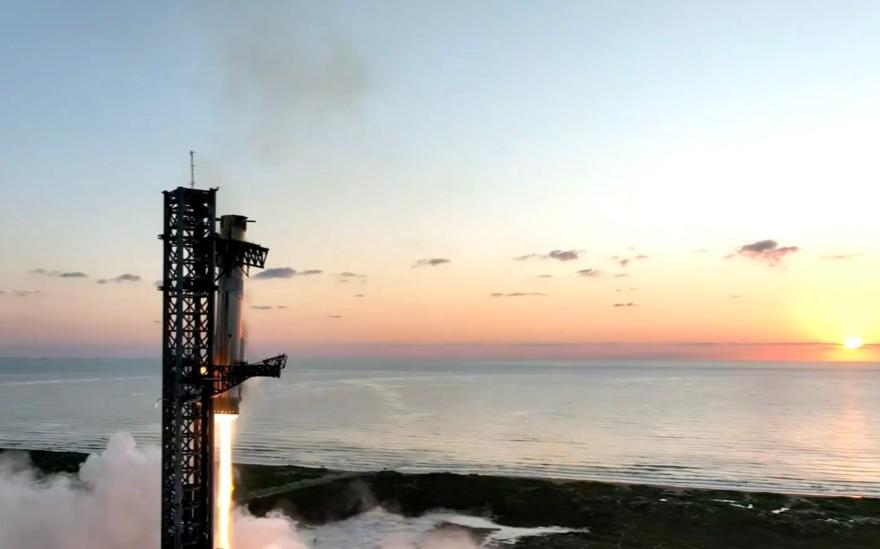SpaceX plans to conduct tests of refueling Starships in space at the beginning of next year
Starship's potential to revolutionize the commercial space sector has garnered significant attention; however, NASA is equally optimistic that this vehicle will facilitate the return of humans to the moon as part of the Artemis program.

SpaceX is set to attempt the transfer of propellant between two orbiting Starships as early as next March, marking a significant technical achievement that will facilitate an uncrewed landing demonstration of a Starship on the lunar surface, according to a NASA official this week.
The potential of Starship to revolutionize the commercial space sector has garnered considerable attention, but NASA is equally optimistic that the vehicle will enable the return of humans to the moon as part of the Artemis program. The agency has awarded SpaceX a contract worth $4.05 billion for the development of two human-rated Starship vehicles, which will be responsible for landing astronauts on the moon for the first time since the Apollo missions. The crewed landing is currently slated for September 2026.
Kent Chojnacki, the deputy manager of NASA’s Human Landing System (HLS) program, elaborated on the collaboration between the agency and SpaceX in an interview with Spaceflight Now, emphasizing the importance of the upcoming mission. It is evident that NASA is closely monitoring the test campaign of Starship, which has successfully completed five launches to date.
During the latest test on October 13, SpaceX achieved a historic milestone by capturing the Super Heavy rocket booster mid-air using “chopsticks” attached to the launch tower for the first time.
Chojnacki has an extensive background in the Space Launch System (SLS) program, which is responsible for the development of a large rocket of the same name, constructed by several established aerospace companies. The inaugural SLS rocket successfully launched the Artemis I mission in December 2023, with future rockets designated to support subsequent missions under the Artemis initiative. However, it is important to note that no components of the SLS rocket are reusable, resulting in NASA incurring costs exceeding $2 billion for each launch vehicle.
The initial contracts for the Space Launch System (SLS) program were granted more than ten years ago under a "cost-plus" framework, which entails that NASA compensates a base fee along with incurred expenses. This contract structure has faced significant criticism for promoting extended development periods and elevated costs. In contrast, the Human Landing System (HLS) contracts operate on a "fixed-price" basis, allowing SpaceX to receive a one-time payment of $2.99 billion contingent upon the achievement of specific milestones.
Chojnacki noted that NASA has adopted markedly different strategies for the HLS compared to the SLS program, extending beyond just the contracting approach.
“The SLS program adhered to a conventional NASA methodology. NASA established a stringent set of requirements and specified propellant inventory, along with other elements. These requirements were cascaded down. The contracts were cost-plus, prompting aerospace companies to respond in a traditional manner,” he explained. “In contrast, the HLS program involves numerous moving components simultaneously. For SpaceX’s current contract regarding their initial landing, there are 27 system requirements. We have kept these requirements as flexible as possible.”
Under the terms of SpaceX’s contract, the company is obligated to fulfill essential design reviews, while also having the option to suggest additional milestones for payment. One of the requirements proposed by SpaceX is the demonstration of ship-to-ship propellant transfer. These tests are anticipated to commence around March 2025, with completion expected by the summer, according to Chojnacki.
“This will mark the first demonstration of this kind on such a scale, representing a significant milestone. Once achieved, it will greatly enhance the capability to transport substantial payloads and cargo beyond Earth’s atmosphere. The ability to utilize a Starship for propellant aggregation will be a crucial step toward conducting an uncrewed demonstration.”
The forthcoming significant evaluation of Starship, following the testing phase, will be the Critical Design Review (CDR) scheduled for the summer of 2025. During this review, NASA will confirm that SpaceX has fulfilled all 27 system requirements. Chojnacki noted that NASA astronauts engage with SpaceX on a monthly basis to offer feedback regarding the interior design of Starship. The company is currently constructing mockups of the crew cabin, which will include sleeping quarters and a laboratory, at its Boca Chica facility. NASA expects to receive a design update this month, which will be reviewed during the CDR next year.
NASA's contributions extend beyond interior design; it has also provided insights into various aspects of the rocket's design, including the cryogenic components, and has conducted tests on the thermal tiles that maintain the low temperatures of the cryogenic fuels.
If everything proceeds as planned, SpaceX aims to land astronauts on the moon by September 2026.
"We are firmly committed to that timeline. Currently, we do not foresee any significant obstacles. However, there are several new elements that need to be demonstrated, and we have established a plan to carry out those demonstrations."